13 Best Herbal Tinctures For Menstrual Cramps
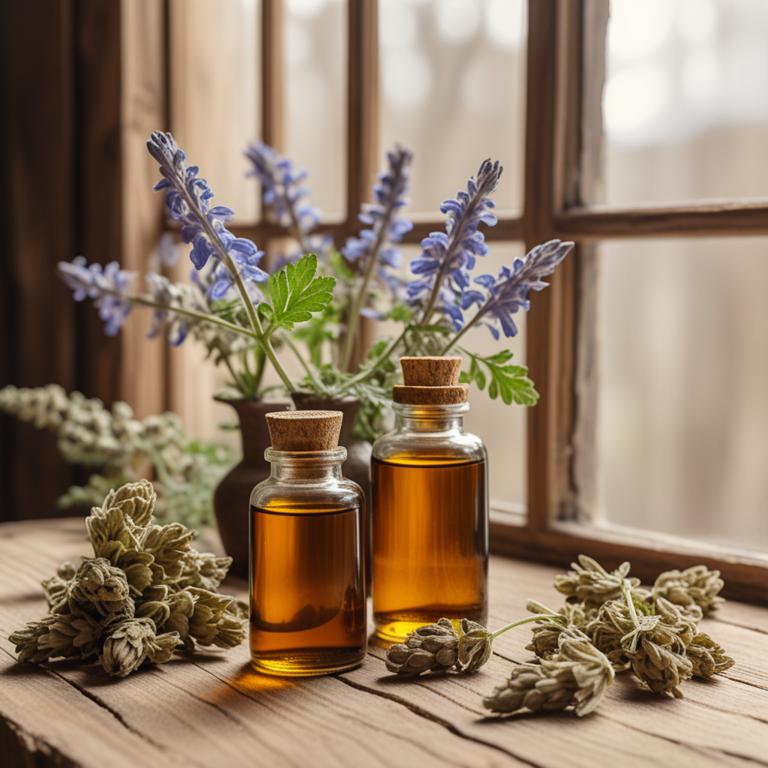
Herbal tinctures for Menstrual cramps are a natural remedy made from concentrated plant extracts, typically used to alleviate the painful symptoms associated with PMS and menstrual cramps.
These tinctures offer a range of benefits, including reducing inflammation, relieving muscle spasms, and promoting relaxation, making them an effective alternative to traditional pain relief medications.
Examples of herbal tinctures that can be used to treat menstrual cramps include Willow Bark (which contains salicin, a natural pain reliever), Cramp Bark (which helps to relax uterine muscles), Ginger (which reduces inflammation and soothes the digestive system), Peppermint (which eases cramps and calms the mind), and Raspberry Leaf (which supports uterine health and regulates menstrual cycles).
By incorporating these herbal tinctures into their self-care routine, women can experience natural relief from menstrual cramps and improve their overall well-being.
According to "Complementary therapies in medicine", tinctures for menstrual cramps may be effective in relieving menstrual pain, although most of the evaluated studies on medicinal plants showed low or unclear quality, warranting caution in interpreting the results.
Below there's a list of the 13 best herbal tinctures for menstrual cramps.
- 1. Glycyrrhiza glabra tinctures
- 2. Hypericum perforatum tinctures
- 3. Cimicifuga racemosa tinctures
- 4. Paeonia lactiflora tinctures
- 5. Angelica archangelica tinctures
- 6. Zingiber officinale tinctures
- 7. Passiflora incarnata tinctures
- 8. Mentha x piperita tinctures
- 9. Lavandula angustifolia tinctures
- 10. Viburnum opulus tinctures
- 11. Ruscus aculeatus tinctures
- 12. Silybum marianum tinctures
- 13. Achillea millefolium tinctures
Also you may be interested in...
TODAY'S FREE BOUNDLE
Herb Drying Checklist + Herbal Tea Shopping List + Medicinal Herbs Flashcards
Enter you best email address below to receive this bundle (3 product valued $19.95) for FREE + exclusive access to The Aphotecary Letter.
$19.95 -> $0.00
1. Glycyrrhiza glabra tinctures

Glycyrrhiza glabra tinctures have been traditionally used to treat menstrual cramps due to their anti-inflammatory and antispasmodic properties, which help to relax the uterine muscles and reduce pain.
The bioactive constituents of Glycyrrhiza glabra, including glycyrrhizin and flavonoids, are believed to contribute to its therapeutic effects by inhibiting the production of prostaglandins, which are hormone-like substances that cause pain and inflammation during menstruation.
By reducing prostaglandin production, Glycyrrhiza glabra tinctures help to alleviate menstrual cramps, allowing women to manage their symptoms more effectively.
The benefits of using Glycyrrhiza glabra tinctures to treat menstrual cramps include reduced pain, improved mood, and enhanced overall well-being, making it a popular natural remedy for women experiencing menstrual discomfort.
2. Hypericum perforatum tinctures

Hypericum perforatum tinctures, derived from the St. John's Wort plant, have been traditionally used to alleviate menstrual cramps due to their anti-inflammatory and antispasmodic properties, which help to relax the uterine muscles and reduce pain.
The bioactive constituents, such as hyperforin and hypericin, possess analgesic and anti-inflammatory effects, contributing to the relief of menstrual cramps.
The use of Hypericum perforatum tinctures to treat menstrual cramps has been attributed to their ability to inhibit the production of prostaglandins, hormone-like substances that trigger uterine contractions and pain.
By utilizing Hypericum perforatum tinctures, women may experience improved menstrual comfort, reduced pain, and enhanced overall well-being.
Related Study
According to "Journal of ethnopharmacology", Hypericum perforatum tinctures for menstrual cramps may be effective due to the presence of saponin glycosides, flavonoids, tannins and alkaloids, which exhibited anti-nociceptive and anti-inflammatory activities in rodent studies, corroborating its traditional use in treating dysmenorrhea.
3. Cimicifuga racemosa tinctures
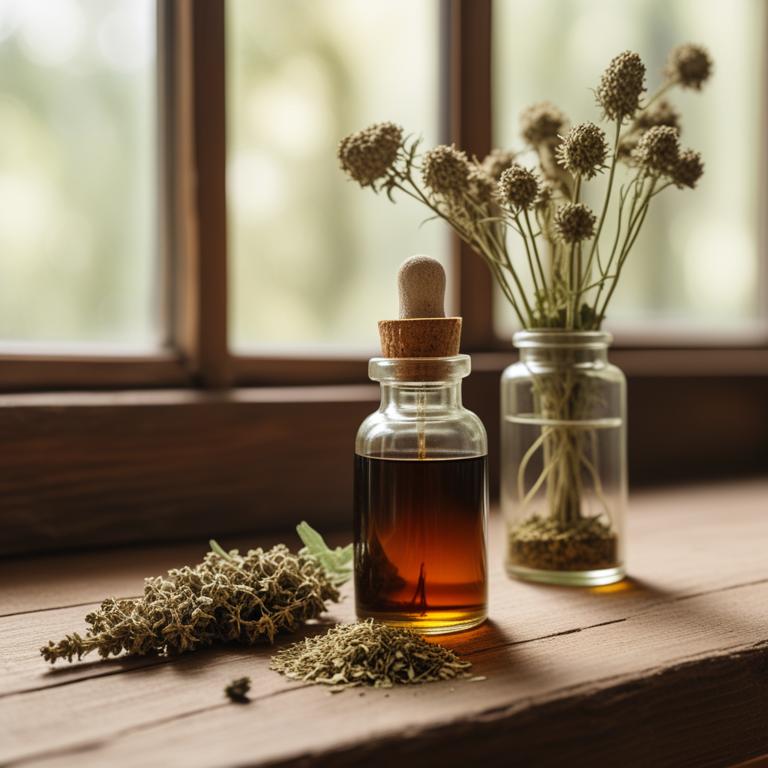
Cimicifuga racemosa tinctures, also known as black cohosh, have been traditionally used to treat menstrual cramps due to their anti-inflammatory and antispasmodic properties.
The bioactive constituents of black cohosh, including triterpene glycosides and phenolic acids, help to relax the uterine muscles and reduce prostaglandin levels, thereby alleviating menstrual cramp symptoms.
This herbal preparation helps to treat menstrual cramps by reducing pain and discomfort, improving mood, and promoting relaxation.
The benefits of using Cimicifuga racemosa tinctures to treat menstrual cramps include reduced symptoms, improved quality of life, and a natural alternative to pharmaceutical medications.
4. Paeonia lactiflora tinctures
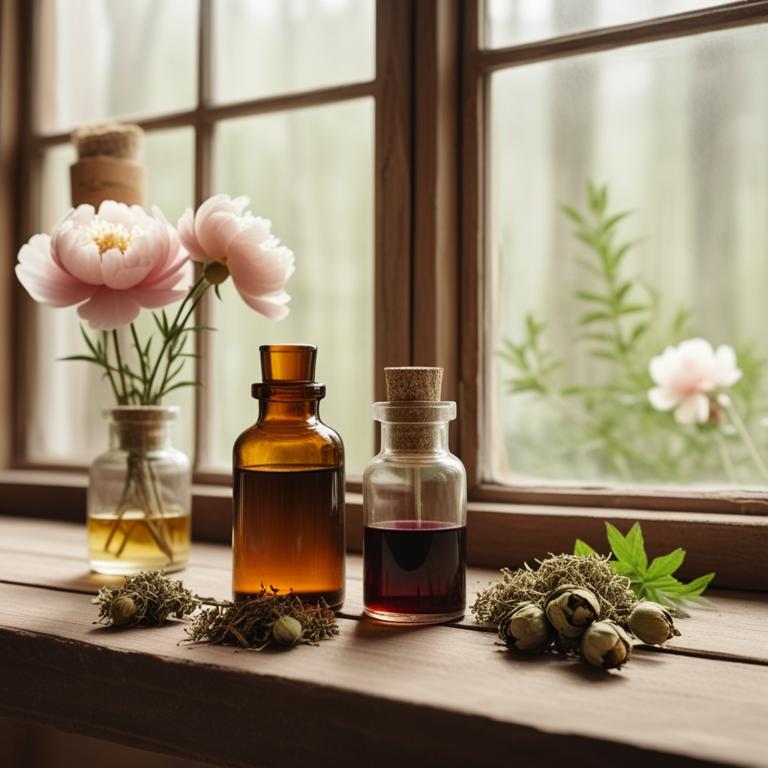
Paeonia lactiflora tinctures have been traditionally used to treat menstrual cramps due to their anti-inflammatory, antispasmodic, and analgesic properties.
The herbal preparation helps to alleviate menstrual cramps by relaxing the uterine muscles, reducing inflammation, and blocking the pain signals to the brain.
The bioactive constituents of Paeonia lactiflora, including flavonoids, phenolic acids, and glycosides, contribute to its therapeutic effects, specifically peonidin and its derivatives, which have been shown to possess analgesic and anti-inflammatory properties.
By using Paeonia lactiflora tinctures, women may experience relief from menstrual cramps and associated symptoms, such as bloating and mood swings, making it a natural and effective remedy for menstrual discomfort.
Related Study
According to "Journal of ethnopharmacology", Paeonia lactiflora tinctures for menstrual cramps may be effective in treating dysmenorrhea, a traditional ethnomedicinal use of the genus Paeonia, due to the presence of bioactive compounds such as paeoniflorin and paeonol.
5. Angelica archangelica tinctures
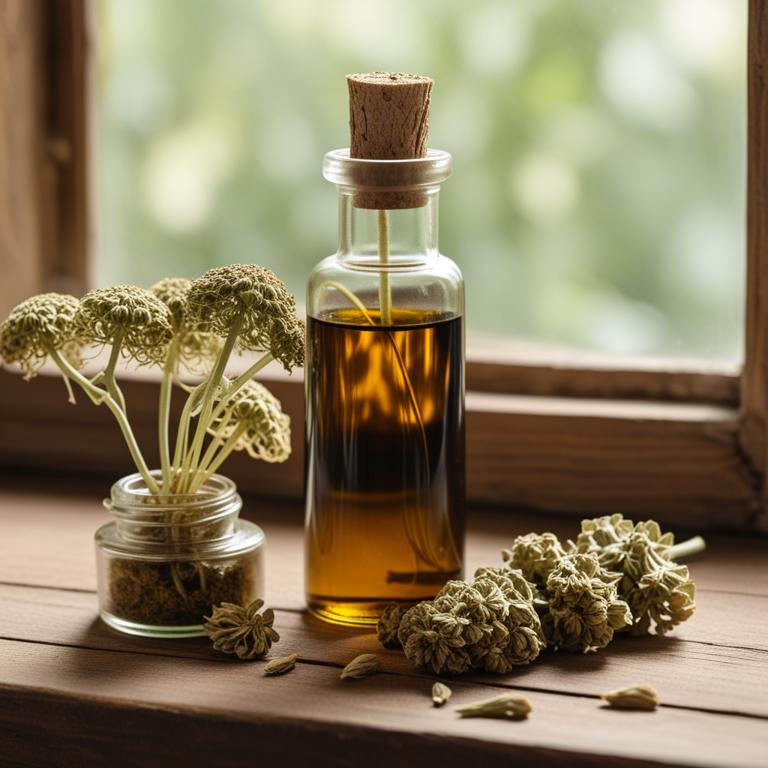
Angelica archangelica tinctures have been used for centuries to treat menstrual cramps due to their anti-inflammatory, antispasmodic, and analgesic properties.
These properties help to ease muscle spasms, reduce pain, and promote relaxation, thereby providing relief from menstrual cramp symptoms.
The bioactive constituents of Angelica archangelica tinctures, including ferulic acid, limonene, and sesquiterpenes, contribute to its analgesic and anti-inflammatory effects, making it an effective natural remedy for menstrual cramps.
By using Angelica archangelica tinctures, women can experience benefits such as reduced pain, improved mood, and enhanced overall well-being during their menstrual cycles.
6. Zingiber officinale tinctures

Zingiber officinale tinctures, derived from the rhizomes of the ginger plant, have been traditionally used to alleviate menstrual cramps due to their analgesic and anti-inflammatory properties.
The bioactive constituents of this herbal preparation, including gingerols and shogaols, help to treat menstrual cramps by inhibiting the production of prostaglandins, which are hormone-like substances that cause pain and inflammation.
The benefits of using Zingiber officinale tinctures to treat menstrual cramps include reduced severity and frequency of cramps, as well as improved overall well-being.
Regular consumption of Zingiber officinale tinctures may also help to reduce nausea and vomiting associated with menstrual cramps, making it a popular natural remedy for menstrual relief.
7. Passiflora incarnata tinctures
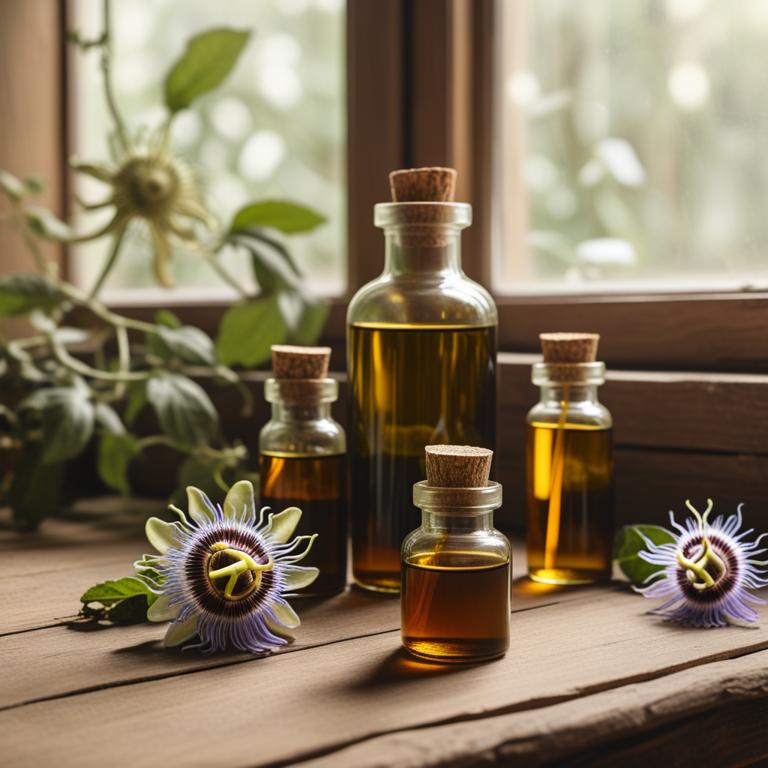
Passiflora incarnata tinctures have been traditionally used to alleviate menstrual cramps due to their analgesic and anti-inflammatory properties.
The herbal preparation helps to treat this ailment by relaxing the uterine muscles, reducing spasms, and relieving pain.
Bioactive constituents such as flavonoids, alkaloids, and glycosides present in Passiflora incarnata tinctures, including harmine, harmaline, and isoflavones, contribute to its therapeutic effects.
The benefits of using Passiflora incarnata tinctures to treat menstrual cramps include reduced severity of symptoms, improved quality of life, and a natural, non-pharmacological approach to managing pain and discomfort.
8. Mentha x piperita tinctures
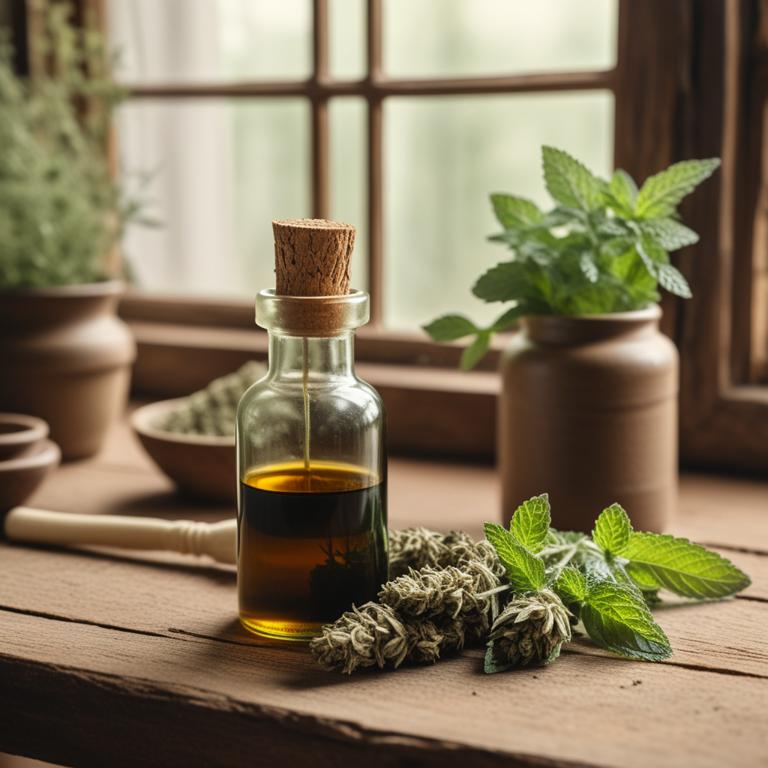
Mentha x piperita tinctures, derived from the leaves of peppermint, have been traditionally used to treat menstrual cramps due to their anti-inflammatory and analgesic properties.
The bioactive constituents of mentha x piperita, including menthone and menthol, help to relax the uterine muscles, reduce spasms, and alleviate pain associated with menstrual cramps.
By modulating the body's prostaglandin levels, these tinctures can also help to reduce inflammation and ease discomfort, providing relief from menstrual cramps.
The benefits of using mentha x piperita tinctures to treat menstrual cramps include their natural and non-invasive approach, making them a popular alternative to pharmaceutical pain relievers.
Related Study
According to "Complementary therapies in medicine", Mentha x piperita tinctures may be effective in relieving menstrual pain, as shown in at least one randomised controlled trial among the 22 evaluated medicinal plants in the study.
9. Lavandula angustifolia tinctures

Lavandula angustifolia tinctures have been traditionally used to alleviate menstrual cramps due to their analgesic, anti-inflammatory, and antispasmodic properties.
These herbal preparations help to treat menstrual cramps by relaxing the uterine muscles, reducing pain and discomfort, and promoting a sense of calmness and well-being.
The bioactive constituents of Lavandula angustifolia, including linalool and linalyl acetate, have been found to have a positive effect on the body's ability to manage pain and reduce inflammation.
The benefits of using Lavandula angustifolia tinctures for menstrual cramps include natural pain relief, reduced anxiety and stress, and a decrease in the frequency and severity of menstrual cramps.
10. Viburnum opulus tinctures
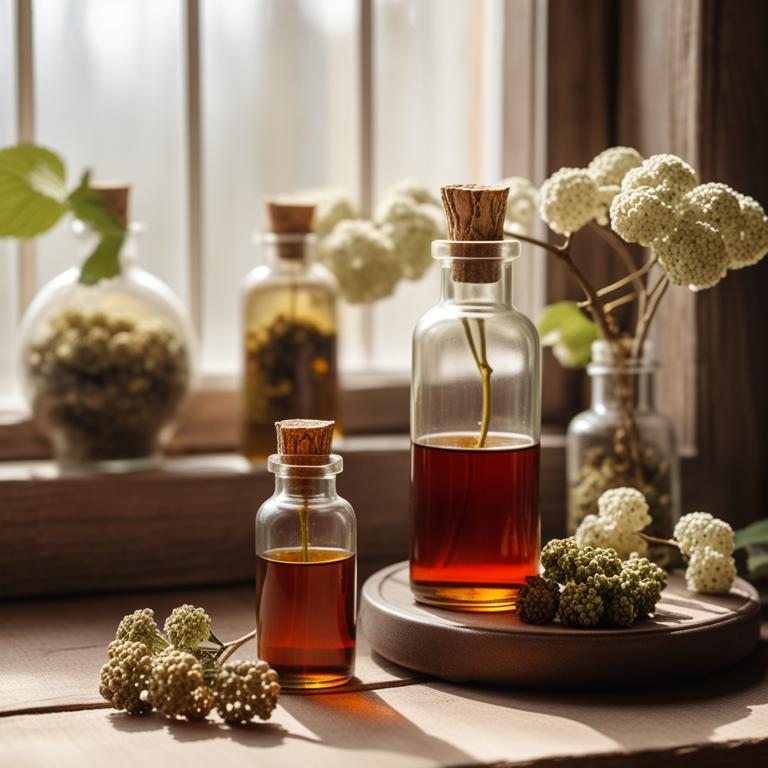
Viburnum opulus tinctures have been traditionally used to treat menstrual cramps, leveraging their antispasmodic and anti-inflammatory properties to provide relief from discomfort and pain.
The bioactive constituents present in Viburnum opulus, such as salicin, coumarins, and flavonoids, contribute to its therapeutic effects, helping to relax the uterine muscles and reduce inflammation.
By utilizing these properties, Viburnum opulus tinctures help to alleviate menstrual cramps, promoting a sense of comfort and well-being in individuals experiencing this common symptom.
Regular use of Viburnum opulus tinctures may also offer additional benefits, including reduced menstrual flow and improved overall reproductive health.
11. Ruscus aculeatus tinctures
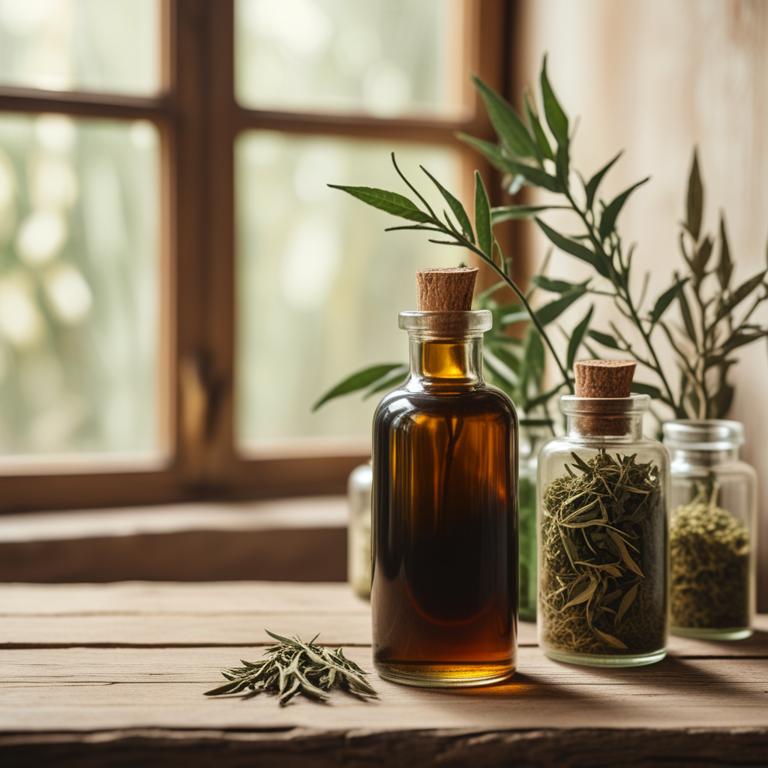
Ruscus aculeatus tinctures have been used traditionally to alleviate menstrual cramps due to their spasmolytic and anti-inflammatory properties.
The herbal preparation contains bioactive constituents such as saponins, flavonoids, and alkaloids that help to relax the uterine muscles and reduce pain associated with menstrual cramps.
These constituents work by blocking the release of acetylcholine, a neurotransmitter that stimulates uterine contractions, thereby providing relief from cramps and discomfort.
Regular use of Ruscus aculeatus tinctures has been reported to provide effective relief from menstrual cramps and improve overall menstrual health.
12. Silybum marianum tinctures

Silybum marianum tinctures, also known as milk thistle tinctures, have been traditionally used to treat menstrual cramps due to their anti-inflammatory and spasmolytic properties.
The bioactive constituents, including silymarin and flavonoids, help to reduce prostaglandin levels, which contribute to menstrual cramp pain.
By inhibiting the production of prostaglandins and reducing inflammation, Silybum marianum tinctures alleviate menstrual cramp symptoms, providing relief to individuals experiencing this condition.
The benefits of using Silybum marianum tinctures to treat menstrual cramps include reduced pain, improved mood, and enhanced overall well-being.
13. Achillea millefolium tinctures
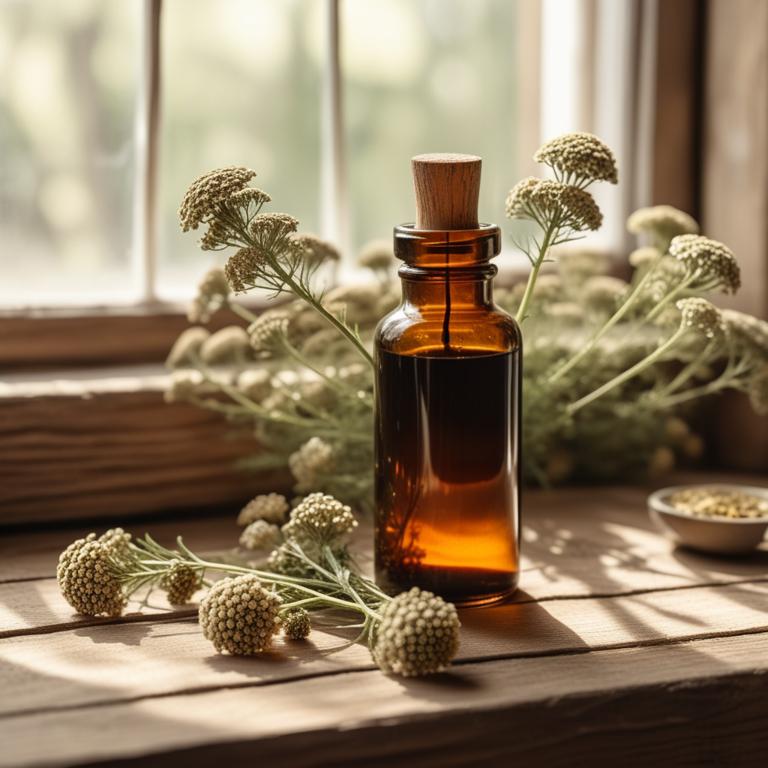
Achillea millefolium tinctures have been traditionally used to treat menstrual cramps due to their anti-inflammatory, antispasmodic, and analgesic properties.
These properties help to ease pain and reduce inflammation in the uterus, providing relief from menstrual cramps.
The bioactive constituents of Achillea millefolium, including sesquiterpenes, flavonoids, and essential oils, are responsible for its therapeutic effects, which help to relax the uterine muscles and reduce prostaglandin production, thereby alleviating menstrual pain.
By using Achillea millefolium tinctures, women can experience the benefits of reduced pain, improved mood, and enhanced overall well-being during their menstrual cycles.